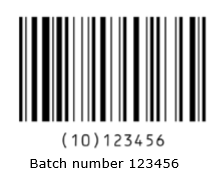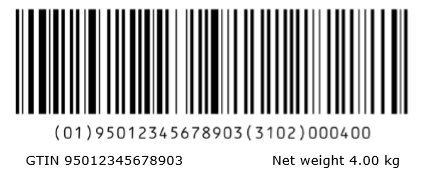GS1 is used to encode information such as product numbers, serial numbers, batch numbers, system numbers etc.
It closely engages with several industries such as food, healthcare, retail, transport and logistics to promote awareness on global standards and best practices, and to provide technical guidance and support in its adoption and implementation. We are already familiar with the use of barcodes in the retail industry. However, barcodes have now made the shopping experience more organized and efficient through both online and offline delivery channels. Barcodes can simply help save lives and money by assisting in traceability and authenticity of medical products. Patients can now have access to the right drugs and treatment owing to the accurate flow of information. Transportation and Logistics is another sector that is also dependent on speed and accuracy. As a wholesaler you would like to know the status of your supplier's shipment. If the shipment is delayed you may have to make certain provisions or may have to incur loses. Barcodes prevent the latter from happening by recording and providing delivery status.
GS1 barcode mainly consists of GS1 prefix, GS1 break, application identifiers and data value for application identifiers.
GS1 Application Identifier - AI
GS1 Application Identifier describes the meaning, structure, and function of the GS1 system element strings so they can be correctly processed in users’ application programs. An element string is the combination of a GS1 Application Identifier and a GS1 Application Identifier data field. GS1 Application Identifier defines the information for product numbers, serial numbers, batch numbers, system numbers etc. The separator character is placed in GS1 barcode immediately after a non-predefined length element string and is followed by the GS1 Application Identifier of the next element string.
Example – GS1 barcode defines Application Identifier AI (10) for Batch number or Lot number.
 Where, 10 is Application identifier for Batch number - 123456
Where, 10 is Application identifier for Batch number - 123456Example – GS1 barcode defines Application Identifier AI (00) for SSCC.
 Where, 00 is Application identifier for SSCC - 006141411234567890
Where, 00 is Application identifier for SSCC - 006141411234567890Different GS1 element strings with Concatenation format

- AI (01) indicates the Application Identifier for Global Trade Item Number - 95012345678903
- AI (3102) indicates the Application Identifier for total weight of the items contained within the pallet – 000400 (4.00 Kg)
 So if you are into any of the industries listed earlier, I am sure you too see the importance of barcodes in labeling your inventory, and if so, share your experience with barcodes with us.
So if you are into any of the industries listed earlier, I am sure you too see the importance of barcodes in labeling your inventory, and if so, share your experience with barcodes with us.
